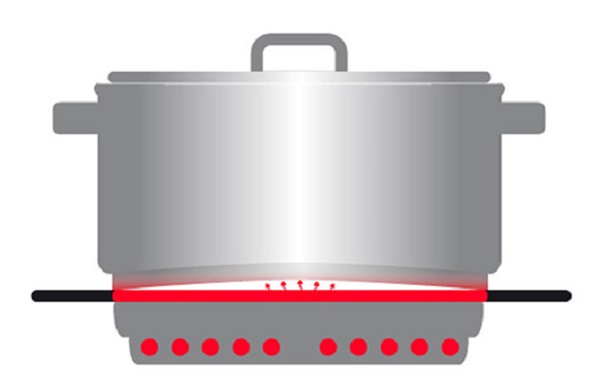When it comes to cooking pots, a flat bottom works best.
A client called us recently to complain that their hotplates were slow to heat up and that it took a long time to cook anything on the stove top.
We did the usual tests of the elements and simmerstat controls and checked for heat damaged wiring under the hob.
Everything seemed to be in good order and working correctly so the client offered to give us a demonstration. A pot was filled with water and the hotplate was turned up high.
The water did take quite a while to heat up yet the hotplate tested fine again. Our technician then noticed that the bottom of the pot was quite curved, so that most of the base of the pot was not actually touching the hotplate.
Further investigation found that a couple more of the client’s pots had a similar curve of the base.
If the bottom of the pot is not flat and not touching the hotplate then the heat does not transfer well from the hotplate to the pot.
A curved pot will still work but it takes longer to heat up and may not get as hot as it could.
This also means a higher cost of using the hotplates as they will always be running longer in order to achieve the desired result.
In this case, the client opted for a new set of pots and the problem was solved.
Using a pot that is too large and hangs over the side of the hotplate element can also give slow cooking times. Always use the appropriate sized pot for each element.
If you have the opposite problem with a hotplate that is just too hot, to click here see our previous blog post on how to fix that problem.
If you need your hotplates repaired in a hurry, or some free advice on how one to deal with an electrical problem of any kind, phone Mance Electrical Launceston on 6331 4711.

